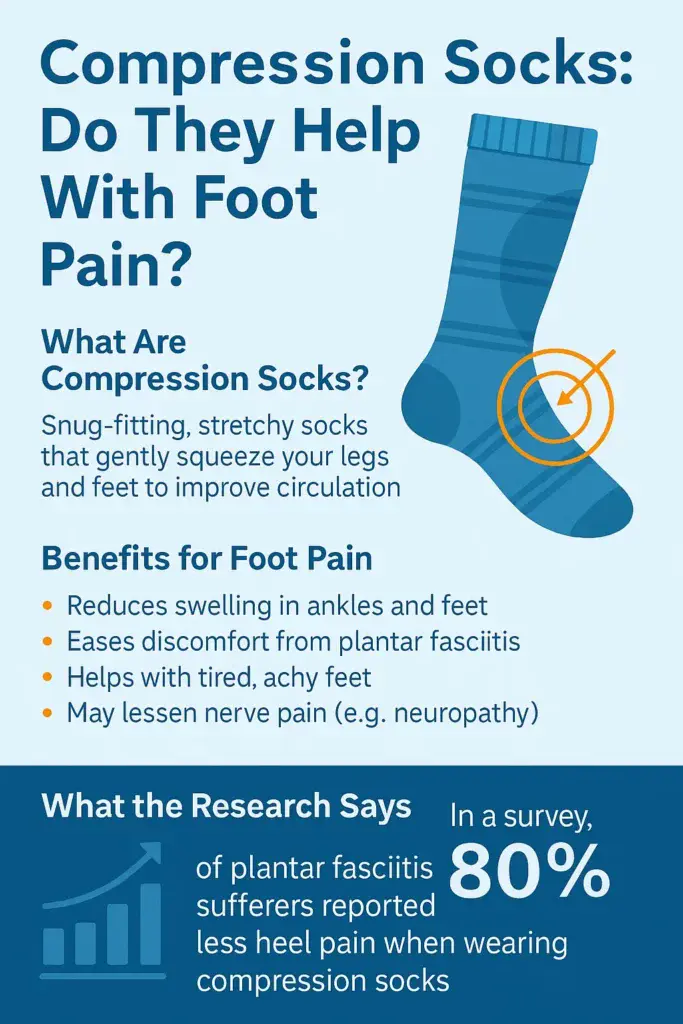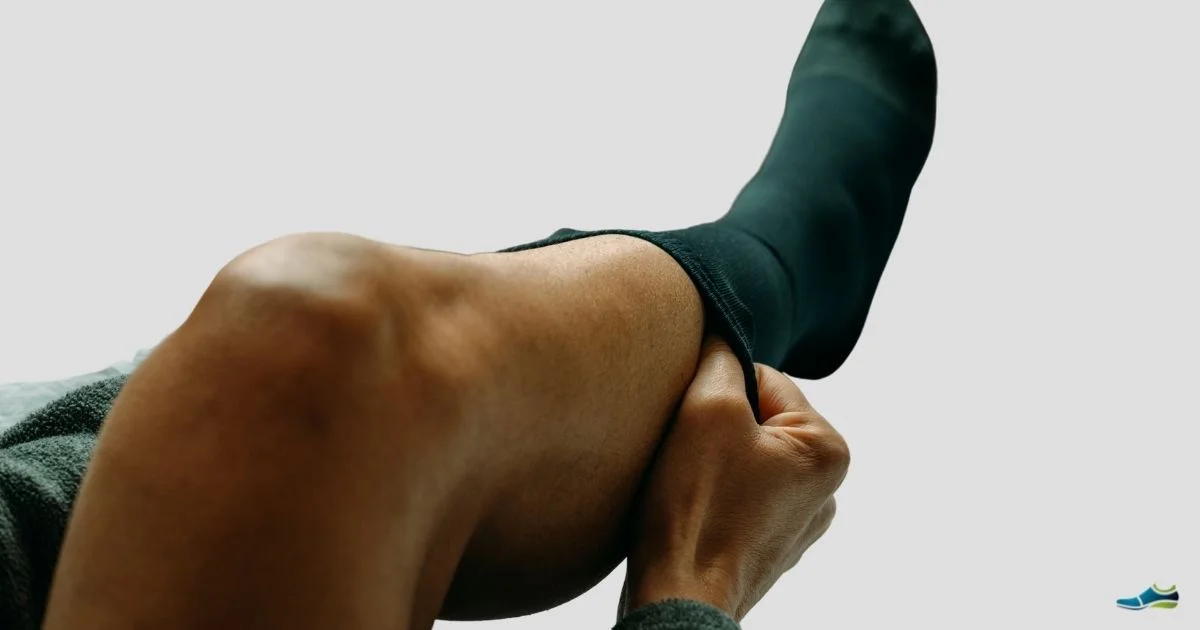Foot pain can strike for any number of reasons — from standing all day to chronic health conditions like plantar fasciitis or diabetes. One option that’s often recommended is wearing compression socks. But do compression socks work? How do they actually work? and do they genuinely help with foot pain?
Let’s unpack the science and practical benefits of compression socks — especially if you’re someone who needs a wider-fitting shoe or struggles with swelling, fatigue, or daily foot discomfort.
What Are Compression Socks?
Compression socks are specially designed hosiery that apply gentle pressure to your legs and feet. The pressure is typically strongest at the ankle and gradually decreases up the calf. This is known as “graduated compression,” and it’s engineered to support healthy blood circulation by pushing blood back toward the heart, preventing pooling in the lower extremities.
How Compression Socks May Help Relieve Foot Pain
Here’s where compression socks can work for people with foot pain:
- Improved circulation: Better blood flow means more oxygen and nutrients reach tired or damaged tissues in your feet.
- Reduced swelling: Compression helps manage fluid buildup, which is a common contributor to pain and pressure in the feet.
- Support for veins and muscles: Gentle pressure supports the veins and may reduce fatigue, especially if you’re on your feet for long periods.
- Injury prevention: People recovering from injuries or dealing with repetitive strain can benefit from extra support and stability.

As outlined in the infographic above, plantar fasciitis sufferers in particular, benefit from wearing compression socks. Read my full article on Plantar Fasciitis
Conditions That May Benefit From Compression Socks
Compression socks aren’t a miracle cure, but they can be part of a broader strategy to manage foot pain associated with conditions such as:
- Plantar fasciitis – May reduce swelling around the heel and arch.
- Flat feet or fallen arches – Can provide mild arch support in some cases.
- Diabetic neuropathy – Non-binding versions improve circulation while avoiding tight spots.
- Varicose veins – Especially if you experience aching or throbbing in your feet and legs.
- Edema – Helps control fluid retention in the lower legs and feet.
Are Compression Socks Suitable for Wide Feet?
This is a key concern for many visitors to WiderFittingShoes.com. Do compression socks work? Yes! but only if you get the right pair and aren’t suffering with severe neuropathy.
If you have wider feet, it’s important to choose compression socks that don’t dig in or create pressure points. Look for socks that are:
- Specifically labelled “wide fit” or “extra wide calf”
- Made with stretchable, breathable fabric blends
- Available in multiple size options based on ankle, calf, and foot width
Some compression socks are designed to fit snugly over a standard foot width, so always check the sizing chart or customer reviews before purchasing. Ill-fitting compression socks can worsen symptoms rather than relieve them.
When to Wear Compression Socks for Foot Pain
Wearing compression socks at the right times can enhance their benefits. Here are some good use cases:
- During the workday, especially if standing or sitting for long periods
- While exercising (walking, running, or at the gym)
- On flights or long car journeys to reduce circulation issues
- Post-exercise to aid recovery and reduce inflammation
Be cautious about wearing them overnight unless advised by a healthcare provider, especially if you have circulatory or nerve conditions.
What to Look for in Compression Socks for Foot Pain
Here are some features that make a real difference:
- Compression Level: Measured in mmHg (millimetres of mercury). Mild (15–20 mmHg) is usually enough for general use. Moderate (20–30 mmHg) may be suitable for medical needs or chronic pain.
- Wide toe box: Avoid socks that squeeze the toes — a wider toe box adds comfort and prevents friction.
- Padding: Some models offer extra padding at the heel and ball of the foot for shock absorption.
- Seamless design: To reduce chafing or pressure points that may worsen foot pain.
When Compression Socks Might Not Help
Compression socks aren’t suitable for everyone. If you have advanced peripheral arterial disease, severe neuropathy, or skin conditions that react to tight fabrics, speak to your GP or podiatrist before using them.
Final Thoughts: Are Compression Socks Worth Trying?
For many people dealing with daily foot discomfort, compression socks can offer measurable relief — especially when paired with properly fitted, supportive footwear. They’re relatively low-cost, low-risk, and widely available in various sizes and widths. Just make sure they complement your foot shape and any existing conditions, especially if you’re already using wider shoes to manage pain and swelling.
If you’re curious to try them, start with a mild compression level and wear them for a few hours at a time. Take note of any changes in comfort, circulation, or swelling — and adjust accordingly.
Frequently Asked Questions
Q: Can compression socks help with plantar fasciitis?
A: Yes, compression socks can reduce inflammation and support the arch and heel area, helping to alleviate discomfort caused by plantar fasciitis.
Q: Are compression socks good for people with wide feet?
A: Yes, provided you choose compression socks designed for wider feet or calves. A poor fit can actually worsen pain or restrict blood flow.
Q: How long should I wear compression socks each day?
A: Many people benefit from wearing them for 4–8 hours during periods of activity. Avoid sleeping in them unless advised by a healthcare professional.
Q: Do compression socks work immediately?
A: While some people notice reduced swelling or foot fatigue quickly, consistent use over several days to weeks is often needed to see full results.

